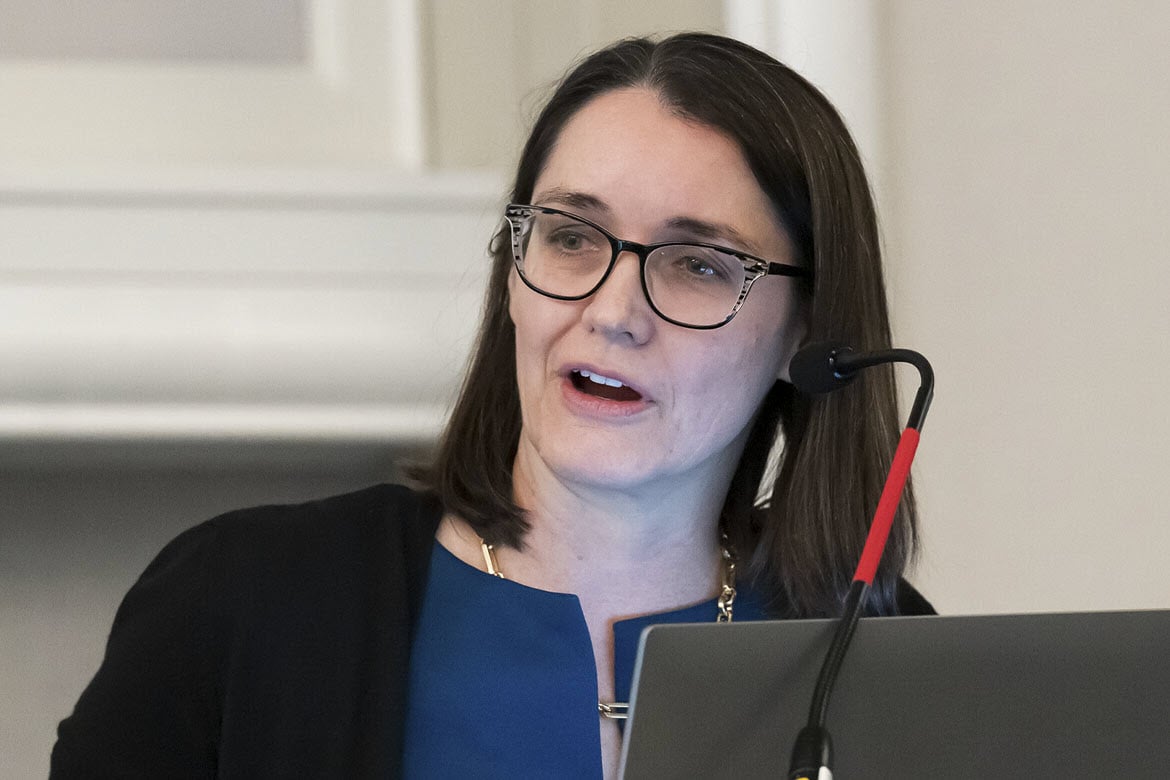Thirteen states now allow optometrists to perform scalpel eyelid surgery, even though these nonphysicians receive only a fraction of the training that ophthalmologists do.
This legal trend is one that deeply concerns Iowa ophthalmologist Erin M. Shriver, MD, whose state in 2020 began allowing those with no required surgical training to perform more than 120 eyelid surgeries.
“By the end of their four-year residency, my two most recent classes of graduating residents completed an average of 129 and 161 eyelid and orbital procedures as primary surgeons,” said Dr. Shriver. She is an oculofacial plastic surgeon and clinical professor at University of Iowa Health Care, which is a member of the AMA Health System Program provides enterprise solutions to equip leadership, physicians and care teams with resources to help drive the future of medicine.
“As assistant surgeons, they've probably done double that amount, so we're looking at over 400 procedures that I've trained them to do over four years to be ready to do what they're doing when they go out into practice,” Dr. Shriver said during an education session at the 2024 AMA Interim Meeting. “It really hits me hard when somebody says they can learn it with no or minimal training because I've worked very hard to learn how to do it safely.”
Just three of the nation’s 24 optometry schools operate in states where optometrists are allowed to do eyelid procedures—about 5% of the country’s total number of students. A 32-hour course exists for optometrists to learn about lasers and similar procedures, eyelid incisional procedures and eyelid injections. Fewer than four of the hours are spent on manual labs doing injections and eyelid procedures.
The AMA is fighting scope creep, defending the practice of medicine against scope of practice expansions that threaten patient safety and undermine physician-led, team-based care.
Consider risks with eyes wide open
According to the American Academy of Ophthalmology:
- Nine states let optometrists perform laser and scalpel eyelid surgery: Alaska, Arkansas, Colorado, Kentucky, Louisiana, Mississippi, Oklahoma, South Dakota and Wyoming.
- Four states allow scalpel eyelid surgery, but no lasers on the eye: Iowa, New Mexico, Tennessee and Washington.
- Virginia allows laser surgery only.
What can go wrong during these procedures is what keeps Dr. Shriver up at night, she said during the session hosted by the Litigation Center of the American Medical Association and State Medical Societies.
For example, she said, the risks of injecting periocular steroids include eye perforation, vascular occlusions that can lead to vision loss, conjunctival necrosis, fat atrophy, skin depigmentation, glaucoma, and the spread of an undiagnosed tumor.
And there are risks of injecting anesthetics too: eye perforation, the spread of undiagnosed tumor, an allergy to the anesthetic, a reaction to epinephrine, and oculocardiac reflex.
Beyond that, Dr. Shriver said, the robust training physicians receive better equips them to navigate the decisions that need to be made and procedures that need to be done. For example:
- Many eyelid lesions do not need to be biopsied or excised as they can be diagnosed by clinical exam.
- More than 50% of chalazions—also called eyelid styes—resolve with conservative measures.
- Plastic surgeons, dermatologists and family physicians can perform these procedures as they have more extensive training with anesthetics and gain more experience with procedures during their residency. These physicians also are more familiar with how to treat anesthetic and procedural complications.
- Damage to surrounding tissues, including the lacrimal drainage system, eyelid margin, and the eye can occur with procedures performed on the eyelid, especially when someone hasn’t had proper training.
- Knowing how to interpret pathology reports is important in ensuring patients’ cancers don’t get missed and proper treatment is provided. While some eyelid lesions clearly are not concerning, it isn’t always easy to tell if lesions are cancerous or noncancerous, and so interpretation of the pathology report is important.
Dr. Shriver has had a number of patients who have had a delay in care of eyelid and orbital cancers by their local optometrists because eyelid and orbital malignancies are not commonly seen in optometric practices. An infant had an orbital rhabdomyosarcoma which was misdiagnosed for several weeks as an eyelid chalazion (stye). An adult patient had conjunctival (the inner layer of the eyelid) lymphoma which was observed for two years. Both patients had urgent biopsies and treatment initiated after being seen in her clinic.
“You don’t know what you don’t know,” Dr. Shriver said. “If most of what you do is regular eye exams, contact lenses and refraction—these conditions are not on your radar.”




